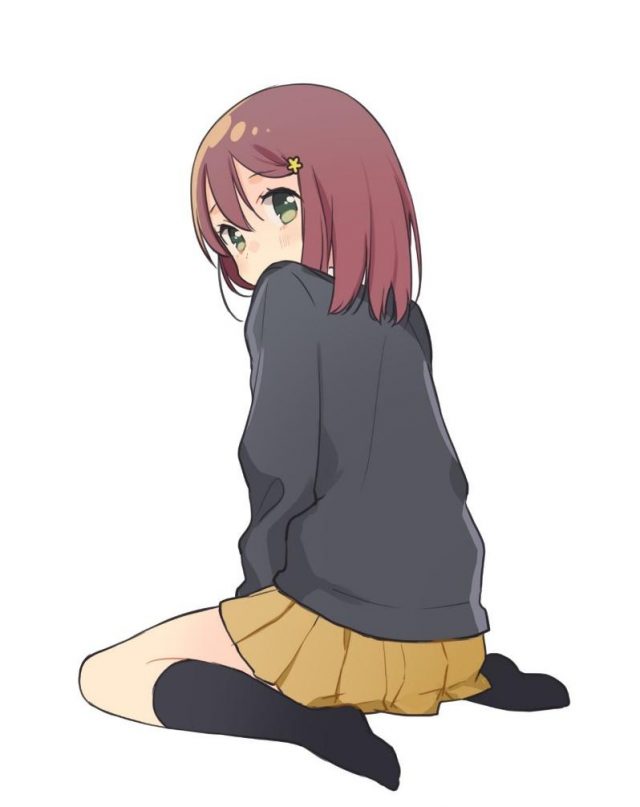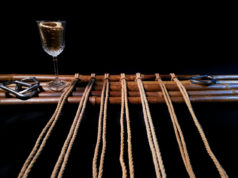If you are taking lessons in Japan or working with a Japanese model, it can be very helpful to know the Japanese words for the sitting positions used most often during rope play. Here is a quick primer:
正座 seiza (pronounced “say- zah”)
In Japan, a tying session most often begins with the model kneeling on the floor with the legs folded under the thighs and the buttocks resting on the heels. This is not a position many people can maintain for long periods, so after some minutes it’s quite common for the person tying to tell the model it’s ok to shift into a more comfortable position. This is usually said in some variation of ashi o kuzushite ii yo 脚を崩していいよ which, in an informal level of politeness, means “It’s ok to undo your legs (and sit in a more comfortable position).” In this situation it means “You don’t have to sit so formally on your legs. You can move your bottom to the side, so your weight is off your heels.” The person tying often communicates this without words, simply by placing the hands on the model’s upper arms and physically shifting the model’s weight to one side. The resulting position is usually called o-neh-san-zuwari or yokozuwari. Read on for more about that sitting position.
お姉さん座りo-neh-san-zuwari (pronounced “oh-neh-san-zoo-wah-ree”); also called 横座りyokozuwari (prounced “yo-ko-zoo-wah-ree,” meaning “sideways sitting”)
Here, the model is sitting with the bottom on the floor and both legs bent at the knee and turned to the same side. This can be a more comfortable position for tying than sitting formally with the legs bent and and folded under the buttocks, but depending on the flexibility of one’s hips and legs, the weight may not be distributed evenly and can eventually be hard on the small of the back.
胡坐 agura (pronounced “ah-goo-rah,” with a hard “g” sound)
This is sitting cross-legged on the floor, or what I grew up calling “Indian style.” The legs are crossed at the ankles with knees bent and out to the sides. Many Westerners who like to tie or be tied know this term because there is a well-known tie called agura-shibari. Now you know why: the name comes from the sitting position.
長座 chōza (pronounced “cho-zah)
This is the word for sitting with the bottom on the floor with the legs extended straight out and flat on the floor with the thighs, knees and ankles together. It literally means “sitting long.” It’s probably not the most useful position for tying but it comes up in exercise and yoga classes, and it doesn’t hurt to know it.
体育座りtaiiku-zuwari (pronounced “tie-ee-koo-zoo-wah-ree”)
Sitting on the floor with the legs in front and bent at the knees, thighs together and the heels on the floor, is called taiiku-zuwari, regardless of the position of the arms (hands together under the knees, as shown in the picture, or together atop the legs on the shins, resting on the floor in some way – or if you’re engaged in rope play, probably behind the back). “Taiiku” 体育 is the Japanese word for gym class at school, also called a physical education (P.E.). Students at school are often instructed to sit in this position when in a gymnasium, outside on the school exercise grounds, on a field trip excursion or at some other sort of school assembly.
ぺたんこ座りpetanko-zuwari (pronounced “peh-tan-koh-zoo-wah-ree,” meaning “flat sitting.”)
Sitting with the bottom flat on the floor with the knees bent and open and flat on the floor on either side of the body is called petanko-zuwari. (In Japanese, petanko is an informal, sort of slang word meaning “smushed flat.”) Variations includeぺたん座りpetan-zuwari and アヒル座りahiru-zuwari. (Ahiru means “duck.” Is this how a duck really sits?) This position is considered really kawaii (“cute”) in Japan and is often drawn in manga.







